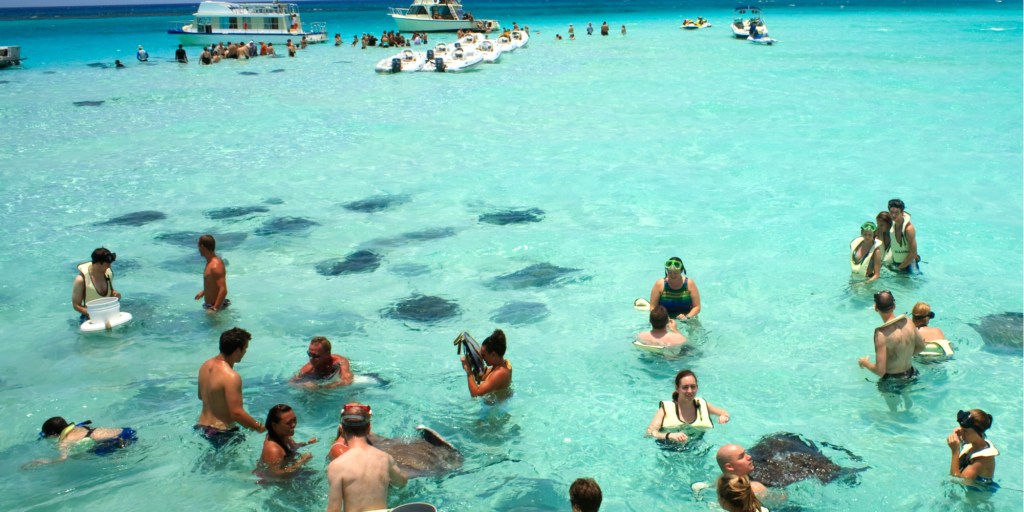5 Summer Stingray Facts

Stingrays are some of the most beautiful creatures you can spot in our local waters, but sometimes they get a bad rap. Today, we’re sharing our favorite stingray facts that make us love these adorable and unusual fish!
1. Stingrays Aren’t (Usually) Dangerous

While it’s true that stingrays can be deadly to humans, this is extremely rare. For example, only two stingray-related deaths have been reported in Australia since 1945! The reason this is so rare is that most of the time, stingrays are entirely peaceful and don’t want to harm any humans.
When stingrays do cause injuries, it’s usually because they’ve been stepped on in shallow waters. One of the best ways to avoid this is to do the “stingray shuffle,” where you shuffle your feet across the ground. These vibrations give stingrays a chance to flee before you get too close, but you still might be able to see them from a safe distance!
2. Stingrays Don’t Need to “See” with Their Eyes
Stingray eyes aren’t great for hunting for food, mostly because they’re on the dorsal side, while their mouths and nostrils are on their underbelly, which can make it hard to hunt using sight alone.
That’s why they have something called the ampullae of Lorenzini, which assists them in detecting changes in electrical fields caused by their prey’s activities. But don’t worry—a fish moving in the water feels very different from a human shuffling past!
3. Stingrays Are Very, Very Old
While stingrays don’t make great fossils because they have cartilage instead of bones, they have left behind scales and teeth that tell us how old they are. And spoiler alert: they’re pretty dang old!
Stingrays are well-represented in the fossil record going back to roughly 50 million years, which means they were already thriving at that time. For context, modern humans have only been around for 200,000 years!
4. There Are Tons of Different Types of Stingrays
Did you know that there are over 220 types of stingray? Some of them can even grow to be upwards of 700 pounds, like the short-tailed stingray near Africa and Australia. But in the Gulf of Mexico, we’ve got cownose rays that are much more beautiful than their name implies.
Named because of the shape of their heads which resemble a cow’s nose, these are smaller stingrays that usually only grow to about three feet in width. Sometimes, beachgoers might mistake these rays for sharks because their wings can stick out of the water!
5. Stingray Babies Can Hunt on Their Own

When a stingray is born, it has everything it needs to hunt and take care of itself. While they’re not as formidable as their parents, baby stingrays have their spines ready to go, so they don’t need much protection from their parents.
How long mom sticks around will depend on the species of stingray. Some rays have been recorded to take care of their babies until they’re about one-third the size of the mother, but others can leave the newborns to take care of themselves much sooner.
Watch Out for Stingrays
Stingrays are a great treat when you get to see them in the water, as long as you’re careful! When you’re out in the water, make sure to shuffle your feet so you don’t accidentally step on a ray and ruin both of your days!
Ready to set up your boat rental? You can book your rental online, call us at (727) 867-0077, or email us at fun@tvboatrentals.com. Summer is boating season, so get out and enjoy the Florida sunshine!
